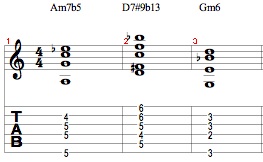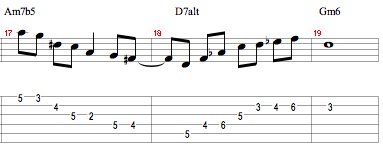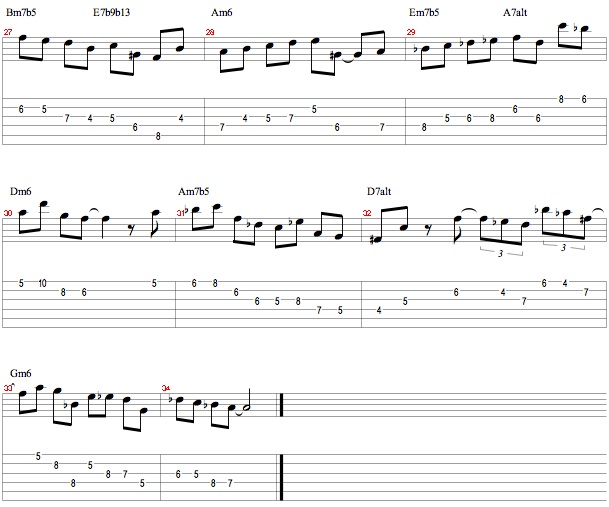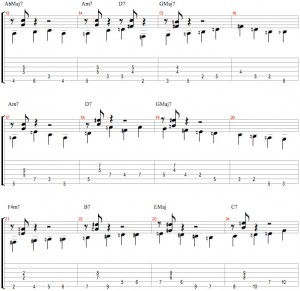Sultry. Spicy. Rich. Exotic. No, I am not talking about your mother. I’m talking about Jazz standards in minor keys. Though they make up a smaller percentage of the Jazz repertoire, minor tunes add a great variety and sound to any performance, album, or jam session. Even if the tune you are playing is in a major key, there’s probably at least a hint of minor in there. And if it’s Jazz it’s probably got a ii-V in it. This article will focus on playing over a ii-V progression in minor keys.
The ii chord in a minor key is a minor 7 b5 chord (mistakenly referred to as a half-diminished chord at times). It is made up of the root, b3, b5, and b7. This chord will get a locrian scale. The V chord will be an altered chord, which is explained in-depth in my previous lesson. It gets the altered scale. And when the progression finally resolves to the i chord, it is played as a minor 6 chord. This chord has the root, b3, 5, and 6. The minor 6 chord gets a melodic minor chord scale. So let’s take the key of G minor. The ii-V-i in this key would be Am7b5, D7alt, Gm6 and over that we would play an A locrian, D altered, and G melodic minor scale.
Example 1a:

Example 1b:

Using these scales, as well as the arpeggios of these chords, you can come up with some cool jazzy licks to play over a minor tune. Here are some that I like to play:
Example 2a:

Example 2b:

Example 2c:

But hold on, the fun doesn’t stop there! For those of you hungry to tackle more, there are options. In Jazz there are tons of substitutions available. First of all, the V chord can always be played with a natural 5 rather than the b5 of the altered scale. Once you do that you get the mixolydian b2 b6 scale (1, b2, 3, 4, 5, b6, b7), often referred to as the phrygian dominant scale or the 5th mode of the harmonic minor. Also, try playing over the iim7b5 chord as if it were the V chord. And as always, we can throw in some sweet blues licks if we wanna get a little nasty. All of these techniques are demonstrated in the example below:
Example 3:

With this arsenal of theory you can now develop what it takes to play over a minor Jazz tune! Write some of your own licks and practice them over different standards like My Funny Valentine, Sugar, Recorda Me, and countless others!















